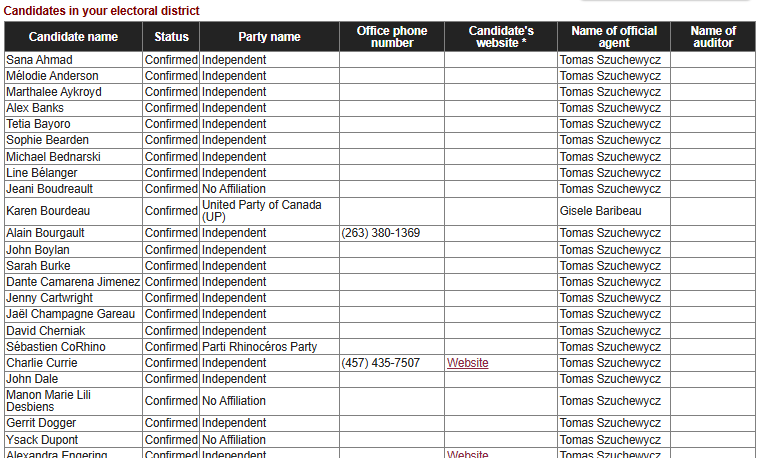If you’ve glanced at a voter’s guide recently and wondered whether your ballot had accidentally been printed on a roll of wallpaper, you may have encountered the latest democratic marvel: The Longest Ballot Committee.
Born of frustration, satire, and a serious challenge to the status quo, the Longest Ballot Committee is turning heads—and turning ballots into novellas. And nowhere is their impact more felt than in Pierre Poilievre’s riding of Carleton, where the movement has made a bold statement.
What is the Longest Ballot Committee?
Formed by a group of activists disillusioned with the limitations of Canada’s first-past-the-post electoral system, the Longest Ballot Committee seeks to draw attention to the need for electoral reform by—quite literally—clogging the ballot with candidates.
Their mission? To encourage as many independent candidates as possible to run in a single riding, transforming the ballot into a symbolic protest. The more names, the longer the ballot, the louder the message: the current voting system is broken, and voters deserve better choices—and a better way to choose.
Why Pierre Poilievre’s Riding?
Targeting Carleton, the riding represented by Conservative leader Pierre Poilievre, was no accident. The committee chose the high-profile riding to draw national media attention and to challenge what they see as the manufactured “winner-takes-all” dynamics that limit voter choice in Canadian elections.
Poilievre, a vocal critic of government overreach and proponent of populist policies, is a lightning rod for debate—making him a strategic focal point for those pushing back against entrenched political narratives.
The Impact on Carleton
In the last federal election, Carleton saw more independent candidates register than most ridings in the country, in part due to the Committee’s campaign. While none came close to toppling Poilievre, their presence reshaped the race:
Voter Education: The movement sparked conversation. Local forums, community discussions, and social media chatter began focusing not just on policy, but on the electoral system itself.
Ballot Awareness: With dozens of names on the ballot, voters were forced to confront the absurdity the Committee was highlighting—why, in 2025, are we still limited to a system that discourages cooperation and rewards strategic voting?
Political Pressure: By inserting themselves into a high-profile race, the Longest Ballot Committee nudged national parties to at least acknowledge the simmering demand for electoral reform.
Critics and Supporters
Detractors argue the Committee confuses voters and wastes resources. Some have accused the group of turning the election into a gimmick. But supporters say it’s a clever act of peaceful protest—drawing attention in a way that editorials and petitions often fail to.
“It’s not about beating Pierre Poilievre,” one Committee member said. “It’s about showing how absurd the current system can be when pushed to its logical extreme. If your democracy breaks under the weight of too many choices, maybe it’s not a great system.”
What Comes Next?
The Longest Ballot Committee doesn’t plan to stop with Carleton. They’ve hinted at expanding to other high-profile ridings, possibly even targeting leaders of other major parties, all while continuing to advocate for proportional representation and ranked ballots.
Love them or hate them, the Committee is a reminder that sometimes, democracy gets messy. And sometimes, a little satire is exactly what the system needs to stay honest.
The Longest Ballot Committee: Taking a Stand, One Name at a Time

